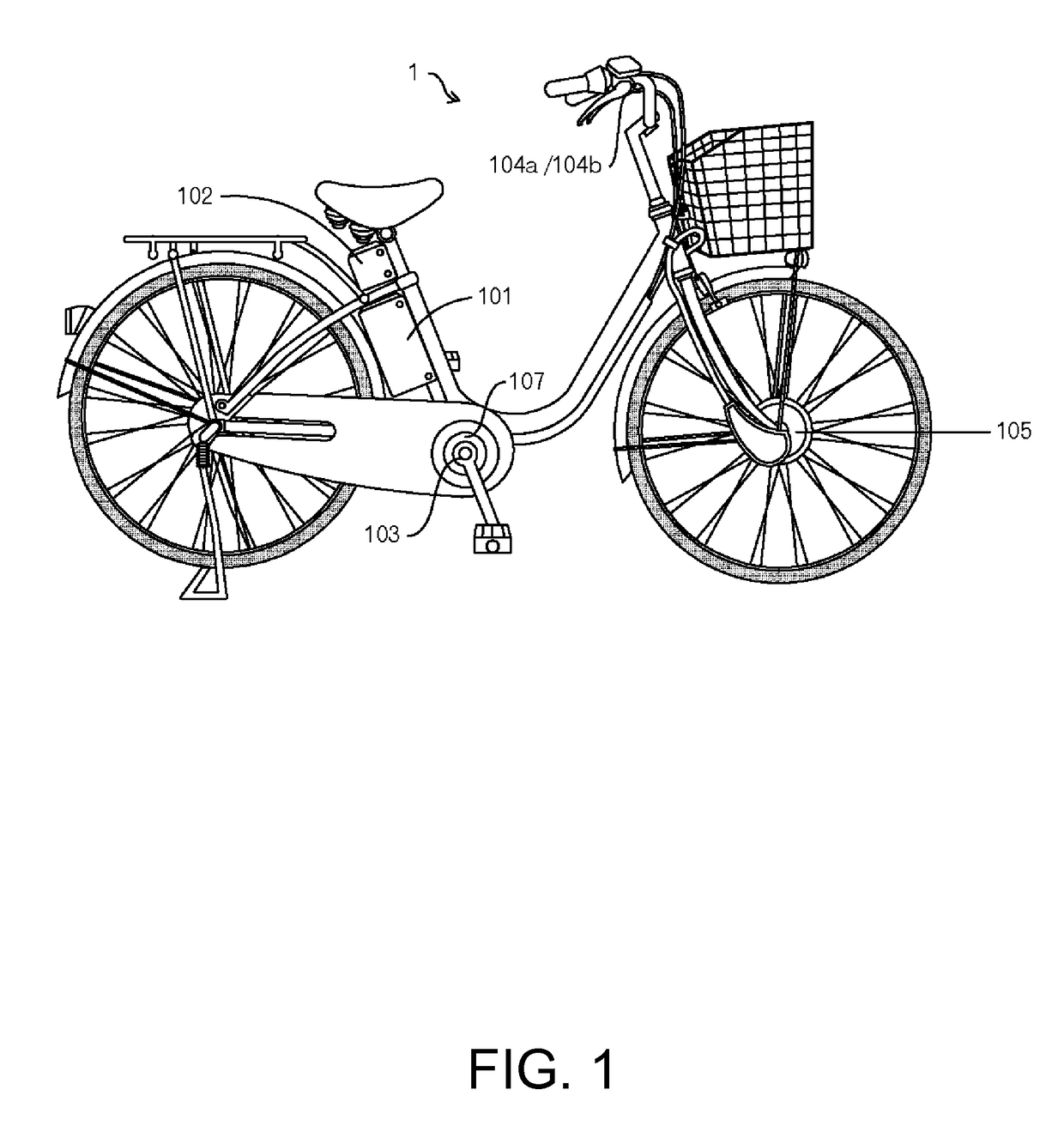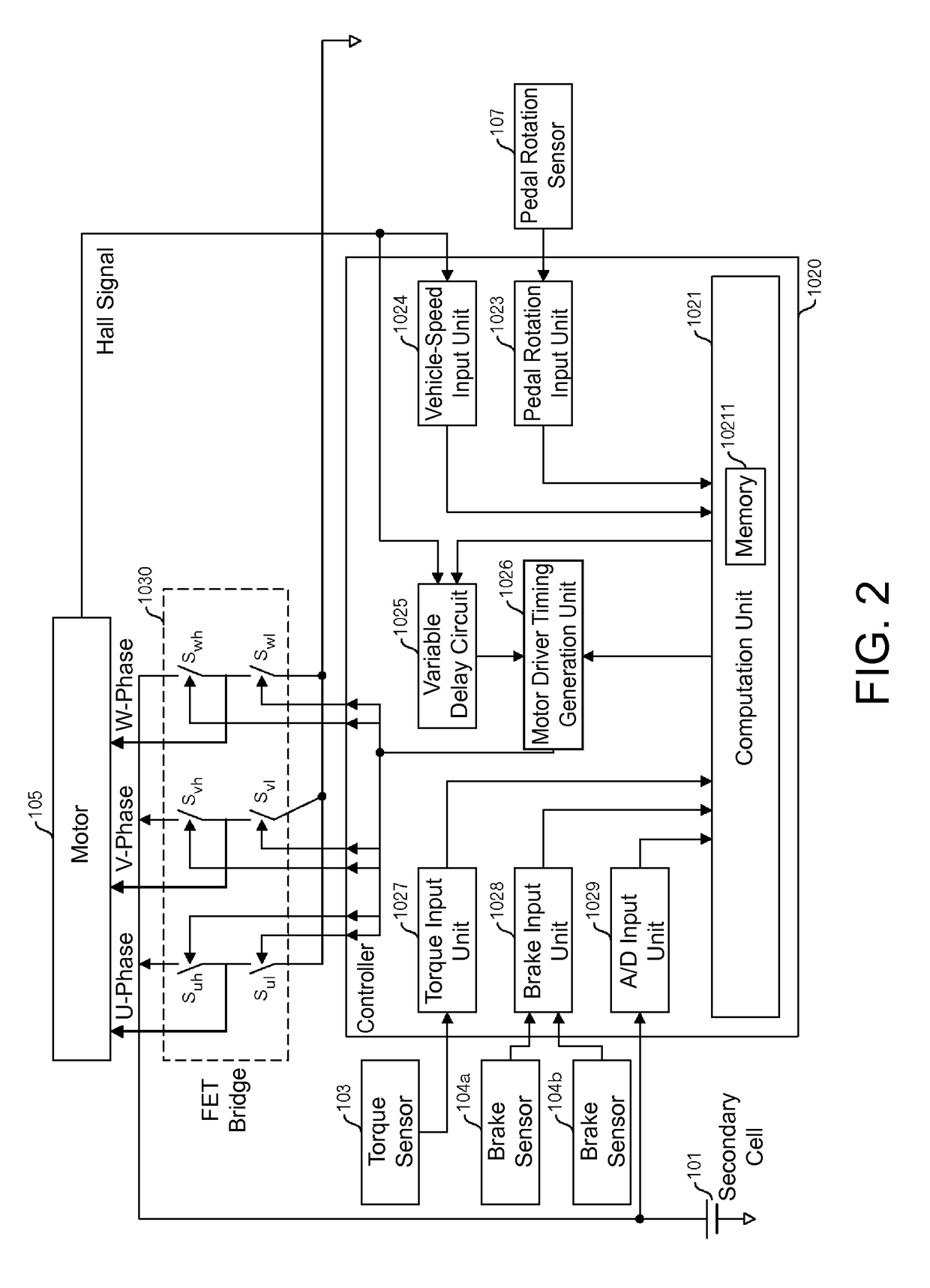Controller for driving a motor, and electric power assisted vehicle
a technology of control technology and motor, applied in the direction of electrodynamic brake system, bicycles, transportation and packaging, etc., can solve the problems of difficult to provide intended regenerative braking force by the rider, hand fatigue, and sense of danger for the rider, so as to achieve the effect of stopping regeneration and starting regeneration with eas
- Summary
- Abstract
- Description
- Claims
- Application Information
AI Technical Summary
Benefits of technology
Problems solved by technology
Method used
Image
Examples
embodiment 1
[0039]FIG. 1 is an external view of one example of a bicycle with a motor attached thereto of the present embodiment, which is an electric power-assisted vehicle. This motor-assisted bicycle 1 is equipped with a motor drive controller. The motor drive controller has a secondary cell 101, a controller for driving a motor 102, a torque sensor 103, brake sensors 104a and 104b, a motor 105, and a pedal rotation sensor 107. Although not shown in FIG. 1, the motor drive controller is sometimes provided with buttons or the like for enabling an exercise mode.
[0040]The secondary cell 101 is a lithium ion secondary cell with a maximum supply voltage (the voltage when fully charged) of 24V, for example. Other types of batteries, however, such as a lithium ion polymer secondary cell, a nickel-hydrogen storage battery, or the like may be used, for example.
[0041]The torque sensor 103 is provided on the wheel that is installed on the crankshaft, and detects the pedal force of the rider and outputs...
embodiment 2
[0061]In Embodiment 1, an example was shown in which only ON and OFF are possible for regenerative operation, but in the present embodiment, it is possible to configure a regenerative control amount that is more in accordance with the intentions of the rider.
[0062]Specifically, control coefficients, such as shown in FIG. 9, are configured. Namely, in the example shown in FIG. 9, the horizontal axis represents the backwards pedal rotation accumulation amount (phase angle) θ, and the vertical axis represents the control coefficient. In this manner, until a set value θ1, the control coefficient increases proportionally to the increase in the backwards pedal rotation accumulation amount. The slope during this time is (control coefficient maximum value) / θ1. When the backwards pedal rotation accumulation amount reaches θ1 and the control coefficient arrives at the maximum value, the control coefficient is maintained at the maximum value even if the backwards pedal rotation accumulation am...
PUM
 Login to View More
Login to View More Abstract
Description
Claims
Application Information
 Login to View More
Login to View More - R&D
- Intellectual Property
- Life Sciences
- Materials
- Tech Scout
- Unparalleled Data Quality
- Higher Quality Content
- 60% Fewer Hallucinations
Browse by: Latest US Patents, China's latest patents, Technical Efficacy Thesaurus, Application Domain, Technology Topic, Popular Technical Reports.
© 2025 PatSnap. All rights reserved.Legal|Privacy policy|Modern Slavery Act Transparency Statement|Sitemap|About US| Contact US: help@patsnap.com



